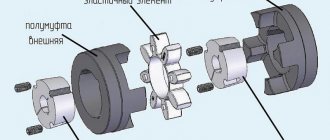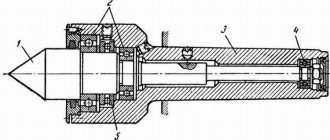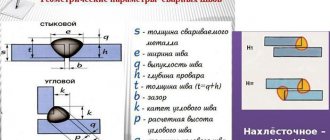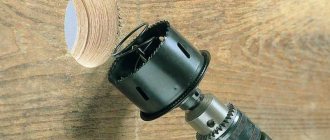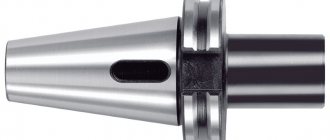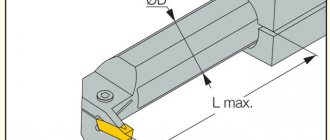Varieties
Different criteria are used to subdivide developments into types.
- Method of use: machine or manual.
- The shape of the hole being processed and its own configuration are conical or cylindrical.
- Fastening method: mounted or tail mounted.
- The arrangement of the cutting edges around the circumference is uneven or with a certain pitch, that is, uniform. The roughness of the machined surface directly depends on the design used.
Machine reamers (installed on machines) and manual reamers are structurally different. In particular, the second type of tool has elongated cutting edges located on the working part. And the shank has a square cross-section, which allows you to securely fix the manual reamer in the existing driver. Using a machine tool, you can deploy nests that are characterized by a sufficiently large depth. This is ensured by the following features:
- the working part is noticeably shorter;
- the neck, on the contrary, is longer.
You need to choose a suitable scan taking into account:
- diameter of the hole planned for processing;
- types of tools: machine or hand type; for what processing is it suitable - finishing-finishing or preliminary-roughing. In the latter case, when choosing, you need to be guided by the following numbers of the required allowance: finishing reaming - min 0.05 mm; max 0.10 mm; roughing operation – min 0.1 mm; max 0.15 mm.
More complete information on this issue is shown in the table. Numerical values are given in millimeters.
| Allowance for surgery | Hole diameters and corresponding allowances | ||||
| 100,0 | 50,0-75,0 | 30,0-50,0 | 18,0-30,0 | 12,0-18,0 | |
| Clean deployment | 0,1 | 0,08-0,1 | 0,07 | 0,06 | 0,04-0,05 |
| Rough deployment | 0,3 | 0,2-0,22 | 0,18 | 0,14 | 0,1-0,11 |
| Common value for both types of processing | 0,4 | 0,3 | 0,25 | 0,2 | 0,15 |
How to Use Manual, Mechanical, Adjustable, and Spread Reamers
Let's look at the features of the tools.
How to use manual reamers
Manual metal reamers are manufactured in accordance with GOST 7722-77. Size range: 3–58 mm. Steps may vary.
When choosing manual metal reamers, craftsmen pay attention to the following parameters.
- Tool dimensions.
- Number of teeth.
- Uniformity of their distribution.
- Type of cutting part.
- Groove profile.
- Type of clamping part.
Reaming holes with a hand tool is done using a wrench. To secure it, there is a special groove at the end of the shank. Usually everything happens this way.
- Marking and marking are carried out.
- The hole is drilled.
- The reamer is secured in the driver, lubricated and inserted into the hole.
- To deploy it, the tool is rotated clockwise.
- The final stage is checking the hole parameters using a gauge.
Image #2: Reaming holes by hand
Let's talk about the important features.
- Manual reamers are very effective. The cutting teeth have sharp edges along their entire length.
- The diameters of the front surfaces of the working parts are reduced. Tools easily fit into pre-prepared holes of the required diameters.
- By increasing the number of cutting edges, the quality of the machined holes increases.
- The holes must be drilled out smoothly. Don't speed up even when moving lightly. Avoid jerking.
- The reamer cannot be rotated in the opposite direction. This leads to breakage of the cutting edges, as well as the appearance of scoring in the holes.
How to use machine reamers
Machine reamers are secured in chucks of lathes, drilling and milling machines. These tools have short working parts with steep leading edge angles (up to 45°). Machine deployment significantly improves productivity.
To machine a hole, you need to secure the reamer, add coolant and align the axes. Next, you need to set the desired rotation speed and start the equipment.
Machine reamers and their application have the following features.
- Tools have a large number of cutting edges. The quality of the resulting holes is at a very high level.
- Machine reaming requires spindle runout compensation. To eliminate this negative factor, hinged mandrels are used.
Photo #6: Machine deployment
Processing is carried out at high speeds. Machine reamers have increased wear resistance.
The sweep is positioned precisely. Due to this, the tool smoothly enters the hole. The same pressure is applied to all teeth. This greatly improves accuracy and minimizes runout.
The speed during reaming is less than when drilling, approximately 2–3 times. Tools do not overheat.
Machine reaming requires the use of significant quantities of cutting fluid.
How to use adjustable reamers
Adjustable reamers allow you to change the outer diameters of the cutting parts to suit specific hole diameters. This is especially useful when machining holes with fractional diameters.
Using small adjustable reamers, you can change the diameter within a range of up to 1 mm. Larger instruments have wider adjustment ranges. Diameters can be varied up to 3 mm.
Photo No. 7: adjustable metal reamer
Adjustable reamers are used in the same way as regular ones. The main difference is that tools of this type are equipped with replaceable knives, which are securely fixed by wedge inserts with linings. The adjustment is made using a locknut. When tightened, the processing diameter increases, and when loosened, it decreases. After adjustment, the diameter is checked using a caliper and a micrometer.
How to use expansion reamers
They are also called sliding ones.
Photo No. 8: metal expansion reamer
Inside such a reamer there is a ball and a screw. When it is twisted, the ball moves and pushes the edges of the tool apart. The diameter increases slightly. The use of expanding reamers makes it possible to increase processing diameters by 0.15–0.5 mm.
It is not recommended to use too much force when tightening the screws. The reamer body may crack.
Deployment Methodology
To fully understand the methodology for carrying out this procedure, it would be advisable to give a specific example. Let it be necessary to create a hole with a diameter of Ø30.0 mm according to qualifications IT6 – IT7. The sequence of steps for completing this task looks like this:
- First, a socket with a diameter of Ø28.0 mm is drilled;
- then the countersinking operation is carried out using a countersink with a diameter of Ø29.60 mm:
- further – rough reaming using a tool with a diameter of Ø29.90 mm;
- finishing reaming using a finishing reamer with a diameter of 30.0 mm
The degree of accuracy of the hole formed as a result of this procedure, as well as the level of roughness of the resulting surface, is influenced, along with the geometric characteristics of the tool used, by the type of coolant (hereinafter, Lubricant and Coolant). If holes are drilled into steel structural elements, special disperse systems are used, in other words, emulsions with mineral oil additives. When parts made of brass and bronze are processed, coolant without such components is used. This topic will be discussed in more detail below.
Purpose and principle of operation
It is the process of machining and cleaning holes.
At first glance, it is similar to drilling and countersinking. But it is used at a later stage, and also has a completely different purpose. After the groove is formed, there are almost always serious deviations in the tolerance level and quality from the initial parameters specified in the drawing. This is a feature of the tool and the human factor. Perfect accuracy is simply impossible to achieve. But the finishing process brings the product as close as possible to the bar specified according to the scheme. And here it becomes clear what sweeping is and what the process is used for. This is an opportunity to achieve the required level of quality. Align the geometry, get rid of burrs and irregularities on the metal. Accordingly, the procedure is especially relevant if a high accuracy class is required for the product being processed. Yes, it is quite possible to reach the eighth or seventh grade with ordinary drilling. Countersinking will allow you to get closer to the fifth, and in some cases even the fourth class. But above that is the job of finishing. The tool itself has a large number of teeth. Thanks to the high speed of circular movements, as well as longitudinal feed, the rod scrapes out any irregularities, and also removes the walls of the hole in the smallest value. Literally tenths of a millimeter are ground off per pass, allowing you to get closer to the ideal parameters indicated in the drawing.
Therefore, metalworking mechanical reaming is the only way to achieve good accuracy indicators even outside the production workshops.
Working with hand tools
Manual deployment involves performing the following steps:
- the parameters of the initial hole and those specified by the T.Z. conditions are analyzed. its final technical characteristics;
- based on the data obtained, a tool is selected for carrying out the preliminary roughing and final finishing deployment procedures;
- the workpiece is firmly fixed in a vice;
- a tool is installed into the hole made in the workpiece at the casting stage or by drilling it, with which the rough reaming operation will be performed;
- then a collar is put on its shank;
- then a special lubricant is applied to both working surfaces - the inner hole being machined and the outer reamer;
- the next stage is the actual rough deployment. It is carried out by slow rotation, without any sudden movements. In this case, it is necessary to constantly apply lubricant material;
- At the end of this stage, the instrument should be carefully removed. This must be done so that it does not turn in the opposite direction;
- then a finishing tool is inserted into the hole, and a wrench is mounted on its square shank;
- finishing deployment is carried out by rotating the knob in a clockwise direction. To obtain a surface with a low level of roughness, the tool feed intensity should be very low, or even better, the minimum allowed according to the technological map;
- After completing the final reaming procedure, you need to check the quality of the machined surface and the correctness of the hole geometry. For this purpose, a scaleless device such as a smooth limiting metrological plug gauge is used.
The figure shows the techniques for carrying out the deployment procedure.
Countersinking
All about square hole drills
A countersink is used to process holes that are pre-stamped, cast or drilled. Countersinking can be both preliminary (before deployment) and final processing. In addition to machining holes, countersinks are sometimes used to process the end surfaces of workpieces.
To increase the accuracy of countersinking (especially when processing cast or stamped deep holes), it is recommended to first bore (with a cutter) the hole to a diameter equal to the diameter of the countersink, to a depth approximately equal to half the length of the working part of the countersink.
Countersinks, like drills, are installed on lathes most often in the tailstock or turret.
Reaming Tapered Holes
The processing scheme for cone-shaped sockets is practically identical to the operation of reaming holes with a cylindrical cross-section or having ledges due to the use of drills of different diameters. Carrying out this procedure with sockets of the last (stepped) configuration differs in that a smaller allowance can be left. Another feature is the use, along with roughing and finishing, of an intermediate tool.
The sequence of stages for deploying holes in a conical configuration is shown in the figure.
The results of such an operation are monitored using a conical metrological gauge. This check is performed:
- determining the depth of passage of the device used for control;
- according to the configuration of the lines of contact between the surfaces of the metrological gauge and the created hole.
The quality of the cone-shaped socket deployment procedure is checked as follows:
- No more than 3-4 lines are drawn with a pencil on the side face of the scaleless control instrument along its longitudinal axis. The distance between them should be approximately the same.
- Under slight pressure, a gauge is inserted into the conical hole of the workpiece and turned a third of a turn.
- After removing the control tool, the condition of the lines drawn at stage No. 1 is checked.
The fact of uniform abrasion of all the above lines indicates the high-quality implementation of the deployment procedure.
What you need to know
Even when I work manually, there is an opportunity to insure myself against a lost axle. It would seem that without a machine it would still be impossible to clearly fix the center and maintain it. But there is a way - you just need to purchase a type of equipment with a coaxial shaft. And then the human factor will be leveled out. True, the model does not provide other advantages of machine processing, please keep this point in mind.
Performing a machine deployment
The choice of modes for carrying out such a technological operation involves the use of special tables. The following parameters are used as initial parameters: material for making the reamer; grade of alloy being processed; diameter of the hole being created. The main characteristics of machine reaming include: the speed of rotation of the machine spindle, as well as the speed of penetration of the tool into the socket. This operation is carried out at a minimum speed when holes in viscous alloys/metals are processed. Reaming of nests in normalized steels is usually carried out at the maximum speed possible according to the technological map.
Types of coolant used
The cutting fluid is matched to the material in which the hole to be reamed is made. Expert recommendations on this issue are formulated as follows:
- tool steel alloys (with a content of the element carbon C exceeding 0.7%), structural alloys of various quality and carbon (the content of the element carbon reaches 2.14%) - a mixture of mineral or petroleum oils; oils with sulfur additives (element S); emulsion, including those based on a 2-phase system; soap solution (water);
- bronze – coolant is not used when deploying;
- aluminum – rapeseed oil (rape seeds are used as a raw material for its production); a mixture of turpentine (scientifically called turpentine oil) with kerosene; refined kerosene; emulsion;
- copper and copper-containing alloys – emulsions;
- cast iron - kerosene is used as a coolant. It is possible to deploy this material without coolant.
Some nuances of the machine deployment procedure
Before you begin machine reaming a hole, special attention should be paid to preparing the equipment. It consists of performing the following actions:
- the seat in the spindle of the unit, as well as the cone-shaped shank of the tool, are wiped with maximum care;
- then the reamer must be inserted into the prepared spindle;
- The part to be processed is fixed on the machine table. In this case, it is necessary to ensure that the axes of the hole and the reamer coincide;
The machine deployment procedure itself includes the following steps:
- upon completion of creating a socket in the workpiece, you need to remove the drill from the spindle of the drilling unit and insert a rough reamer in its place;
- a rough deployment operation is carried out;
- then you need to replace the rough development with a finishing one, and then perform the procedure again;
- Having completed the finishing deployment, it is necessary to remove the tool from the working area, turn off the electric motor of the machine and, using a plug gauge, check the quality of the work performed.
Sometimes it is recommended to mount the reamer in a hinge-type mandrel or a floating chuck for finishing machining.
GOST
There are several standards that regulate product quality. Thus, GOST 29240-91 is responsible for the standard variety, as well as size ranges. And if you understand models that have an allowance, then you will have to be guided by a completely different regulatory document. Or more precisely - GOST 11173-76. A very common procedure at home. When the source of supply becomes not a machine, but an ordinary hand-held device. And in this case, we need to pay attention to GOST 7722-77. But another document, numbered 1672-80, already regulates the standards in one-piece machine-type models. That is, just the factory settings.
Manufacturers
At the moment there are not many prominent brands on the market that are worthy of mention. Among foreign companies, I would like to specifically mention Bahco and Licota, and Rock FORCE also deserves attention.
But our domestic manufacturer often sets more reasonable prices with good quality. TECHMASH or Russian Instrument, as well as AvtoDelo - these companies will be able to give serious competition to foreign companies. Contact us and we will select the equipment you need. Contact us by contact number for consultation.
Well, our review has come to an end. Now you know exactly what sweeps are used for. And you can easily choose the most effective and suitable products for yourself.

